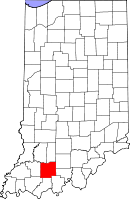 |
| Microcephaly Incidence - Brazil Epi Week 1 |
#10,914
Although the full epidemiological report for week 2 has not yet been uploaded to the Brazilian MOH website, the press release below indicates 3893 suspected microcephaly cases are under investigation, an increase of 363 over last week's number.
In a normal year Brazil records fewer than 200 microcephalic births, but since October that number has skyrocketed, with more than 3800 suspected cases reported in the past few months.
While a firm connection has yet to be established, the operating assumption is these birth defects are due to maternal infection with the Zika virus, a mosquito-borne illness that began to spread in Brazil less than a year ago.
Over the past week we've seen the CDC issue a revised travel advisory , a HAN: Recognizing, Managing & Reporting ZIka Virus Infections In Travelers for clinicians, and MMWR: Interim Guidelines For Pregnant Women During A Zika Outbreak.
Registration Date: 01/20/2016 17:01:47 changed in the 20.1.2016 the 17:01:32MICROCEFALIA
Ministry of Health is acquiring 500 000 PCR tests for the virus, increasing the production capacity of one thousand to 20 thousand monthly diagnostics. Newsletter registers 3,893 suspected cases of microcephaly and points the breakdown of confirmed cases and discarded
(SNIP)
PRESS RELEASE - The new epidemiological report released on Wednesday (20) by the Ministry of Health indicate 3,893 suspected cases of microcephaly. The notifications were registered until 16 January and took place in 764 municipalities in 21 Brazilian states. The report shows a breakdown of confirmed cases and discarded. The notified total of 224 had microcephaly confirmation, 6 confirmed the relationship with the Zika virus and other 282 were discarded. Continue research 3,381 suspected cases of microcephaly.
In total there were 49 reported deaths due to congenital malformations. These five have been confirmed for the relationship with the Zika virus, all in the Northeast, one in Ceará and four in Rio Grande do Norte. Additionally, the release also brings the laboratory investigation of a baby with microcephaly in Minas Gerais, which had the relationship with Zika diagnosed. This is the sixth confirmed the relationship of disease with the virus. These results add to the other scientific evidence obtained in 2015 and reinforce the hypothesis relationship between the Zika virus infection and the occurrence of microcephaly and other congenital malformations.
According to the report, the state of Pernambuco continues with the highest number of suspected cases (1,306), representing 33% of total registered across the country. Next are the states of Paraíba (665), Bahia (496), Ceará (216), Rio Grande do Norte (188), Sergipe (164), Alagoas (158), Mato Grosso (134) and Rio de Janeiro ( 122).
Currently, the movement of the Zika is confirmed by PCR with molecular biology technology. From the confirmation in a particular locality, the other diagnoses are made clinically, for medical assessment of symptoms. So far, they are with indigenous circulation of Zika virus 20 units of the federation. They are: Federal District, Mato Grosso do Sul, Roraima, Amazonas, Para, Rondonia, Mato Grosso, Tocantins, Maranhao, Piaui, Ceara, Rio Grande do Norte, Paraiba, Pernambuco, Alagoas, Bahia, Espírito Santo, Rio de Janeiro, São Paulo and Paraná.
(Continue . . . .)
















 src="https://blogger.googleusercontent.com/img/b/R29vZ2xl/AVvXsEh4zgoKkY5esDyGDfXmhp5tz0W8H2jEgsRJx2wm9317hpr6CTdO8i4DPQj5mF-OAprw6GVcNt84Pt9Yp5U6XEz5h_pAP7azclFEO7kSUzDjr31IvLdzT01usqHnjVk1bBWsqpHQX6G4AIU/s1600/Photo0783.jpg" />
src="https://blogger.googleusercontent.com/img/b/R29vZ2xl/AVvXsEh4zgoKkY5esDyGDfXmhp5tz0W8H2jEgsRJx2wm9317hpr6CTdO8i4DPQj5mF-OAprw6GVcNt84Pt9Yp5U6XEz5h_pAP7azclFEO7kSUzDjr31IvLdzT01usqHnjVk1bBWsqpHQX6G4AIU/s1600/Photo0783.jpg" />












